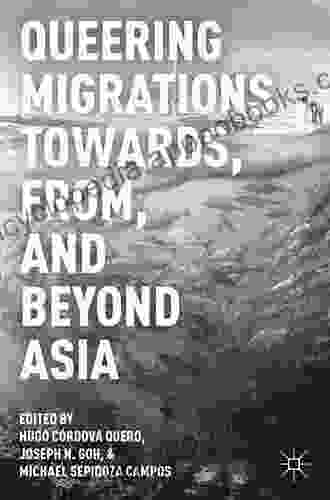Balancing Local Control and State Responsibility for Education: A Comprehensive Guide

The balance between local control and state responsibility for education is a complex and enduring issue in American educational policy. For over a century, policymakers, educators, and community members have debated the appropriate roles of local school boards, state governments, and the federal government in shaping educational policy and practice.
This article provides a comprehensive overview of the issue of balancing local control and state responsibility for education. It examines the key historical, legal, and political factors that have shaped the current landscape of educational governance, and it explores best practices for balancing local autonomy with state accountability.
The debate over local control and state responsibility for education has its roots in the early days of the American republic. Under the Articles of Confederation, each state was responsible for its own educational system. However, the ratification of the Constitution in 1789 gave the federal government limited authority over education, and this authority has been expanded over time through legislation and Supreme Court rulings.
5 out of 5
| Language | : | English |
| File size | : | 870 KB |
| Text-to-Speech | : | Enabled |
| Screen Reader | : | Supported |
| Enhanced typesetting | : | Enabled |
| Word Wise | : | Enabled |
| Print length | : | 349 pages |
In the early 1900s, the progressive movement led to a significant increase in state involvement in education. States began to establish minimum standards for curriculum, teacher certification, and school funding, and they also began to create state boards of education to oversee educational policy.
The civil rights movement of the 1950s and 1960s brought renewed attention to the issue of local control. Civil rights activists argued that local school boards were often resistant to desegregation and other reforms, and they pushed for increased state and federal involvement in education.
In response to these concerns, Congress passed the Elementary and Secondary Education Act of 1965 (ESEA),which provided federal funding for K-12 education and created a new federal role in setting educational standards and enforcing civil rights protections.
The ESEA has been reauthorized several times over the years, and it has become the cornerstone of federal education policy. However, the balance between local control and state responsibility for education remains a contentious issue, and it is likely to continue to be debated for many years to come.
The legal framework for balancing local control and state responsibility for education is complex and evolving. The Constitution does not explicitly mention education, but it does give the states the power to regulate education within their bFree Downloads.
The Supreme Court has ruled that education is a fundamental right, but it has also upheld the states' authority to set educational standards and oversee local school districts.
In recent years, the Supreme Court has ruled that the federal government may not impose unfunded mandates on states or school districts. This has limited the ability of the federal government to directly regulate education, but it has also given states more flexibility to set their own educational policies.
The balance between local control and state responsibility for education is also influenced by a number of political factors. These factors include:
- Partisan politics: The political party in power at the state and federal level can have a significant impact on educational policy. For example, Republicans are generally more supportive of local control, while Democrats are generally more supportive of state involvement.
- Interest groups: A variety of interest groups, including teachers unions, school boards, and business groups, have a stake in the issue of local control and state responsibility for education. These groups often lobby policymakers to support policies that favor their interests.
- Public opinion: Public opinion can also play a role in shaping educational policy. For example, polls have shown that the public is generally supportive of local control, but it is also concerned about the quality of education in some local school districts.
There is no one-size-fits-all approach to balancing local control and state responsibility for education. However, there are a number of best practices that can help to ensure that both local and state interests are taken into account. These best practices include:
- Clear roles and responsibilities: The roles and responsibilities of local school boards and state education agencies should be clearly defined. This will help to avoid confusion and conflict.
- Collaborative decision-making: Local school boards and state education agencies should work together to make decisions about educational policy and practice. This will help to ensure that the needs of both local communities and the state as a whole are met.
- Accountability: Local school boards and state education agencies should be held accountable for the results they achieve. This will help to ensure that both local and state officials are focused on improving the quality of education.
- Flexibility: The balance between local control and state responsibility for education should be flexible enough to meet the changing needs of students and communities. This will help to ensure that the education system is responsive to the needs of all stakeholders.
The debate over balancing local control and state responsibility for education is likely to continue for many years to come. However, there are a number of trends that could shape the future of educational governance. These trends include:
- Increased accountability: Local school boards and state education agencies are increasingly being held accountable for the results they achieve. This is likely to lead to a greater focus on data-driven decision-making and evidence-based practices.
- Greater flexibility: The balance between local control and state responsibility for education is likely to become more flexible in the future. This will allow states and local school districts to tailor their educational policies to meet the
5 out of 5
| Language | : | English |
| File size | : | 870 KB |
| Text-to-Speech | : | Enabled |
| Screen Reader | : | Supported |
| Enhanced typesetting | : | Enabled |
| Word Wise | : | Enabled |
| Print length | : | 349 pages |
Do you want to contribute by writing guest posts on this blog?
Please contact us and send us a resume of previous articles that you have written.
 Book
Book Novel
Novel Page
Page Chapter
Chapter Text
Text Story
Story Genre
Genre Reader
Reader Library
Library Paperback
Paperback E-book
E-book Magazine
Magazine Newspaper
Newspaper Paragraph
Paragraph Sentence
Sentence Bookmark
Bookmark Shelf
Shelf Glossary
Glossary Bibliography
Bibliography Foreword
Foreword Preface
Preface Synopsis
Synopsis Annotation
Annotation Footnote
Footnote Manuscript
Manuscript Scroll
Scroll Codex
Codex Tome
Tome Bestseller
Bestseller Classics
Classics Library card
Library card Narrative
Narrative Biography
Biography Autobiography
Autobiography Memoir
Memoir Reference
Reference Encyclopedia
Encyclopedia Pam Turner
Pam Turner Nadifa Mohamed
Nadifa Mohamed Vikram Sampath
Vikram Sampath Kenneth M Pollack
Kenneth M Pollack Jenny Mccartney
Jenny Mccartney Harry Mcpherson
Harry Mcpherson Amy W Knight
Amy W Knight A S Kline
A S Kline Gillian Sze
Gillian Sze Sue Wilkes
Sue Wilkes Stephen M Krason
Stephen M Krason Victor Vahl
Victor Vahl Tom Rockmore
Tom Rockmore Catherynne M Valente
Catherynne M Valente Summer Lane
Summer Lane Kevin D Murray
Kevin D Murray Grazia Deledda
Grazia Deledda Cynthia St Aubin
Cynthia St Aubin David O Friedrichs
David O Friedrichs Gil Adamson
Gil Adamson
Light bulbAdvertise smarter! Our strategic ad space ensures maximum exposure. Reserve your spot today!
 Derek BellFollow ·10.3k
Derek BellFollow ·10.3k Israel BellFollow ·17.6k
Israel BellFollow ·17.6k Don ColemanFollow ·4.4k
Don ColemanFollow ·4.4k Felipe BlairFollow ·8.8k
Felipe BlairFollow ·8.8k Marcel ProustFollow ·18.3k
Marcel ProustFollow ·18.3k John MiltonFollow ·19.4k
John MiltonFollow ·19.4k Sammy PowellFollow ·8.9k
Sammy PowellFollow ·8.9k Chase SimmonsFollow ·2.8k
Chase SimmonsFollow ·2.8k

 Jacob Hayes
Jacob HayesUnlock the Power of Microsoft Word: A Comprehensive Guide...
Microsoft Word is a widely used word...

 Hunter Mitchell
Hunter MitchellAndrea Carter and the Price of Truth: A Thrilling...
Get ready for an unforgettable...

 Ivan Turner
Ivan TurnerTrading Jeff and His Dog: An Unforgettable Adventure of...
Get ready for an emotional rollercoaster...

 Langston Hughes
Langston HughesGo Viral TikTok: The Ultimate Guide to Gaining 100K...
TikTok has emerged as a social...

 Ibrahim Blair
Ibrahim BlairUnveil the Enchanting Realm of Short Fiction: Dive into...
Delve into a Literary Tapestry of...

 Tennessee Williams
Tennessee WilliamsUnveil the Enchanting World of Elizabeth Barrett...
A Poetic Tapestry of Love, Loss, and...
5 out of 5
| Language | : | English |
| File size | : | 870 KB |
| Text-to-Speech | : | Enabled |
| Screen Reader | : | Supported |
| Enhanced typesetting | : | Enabled |
| Word Wise | : | Enabled |
| Print length | : | 349 pages |












